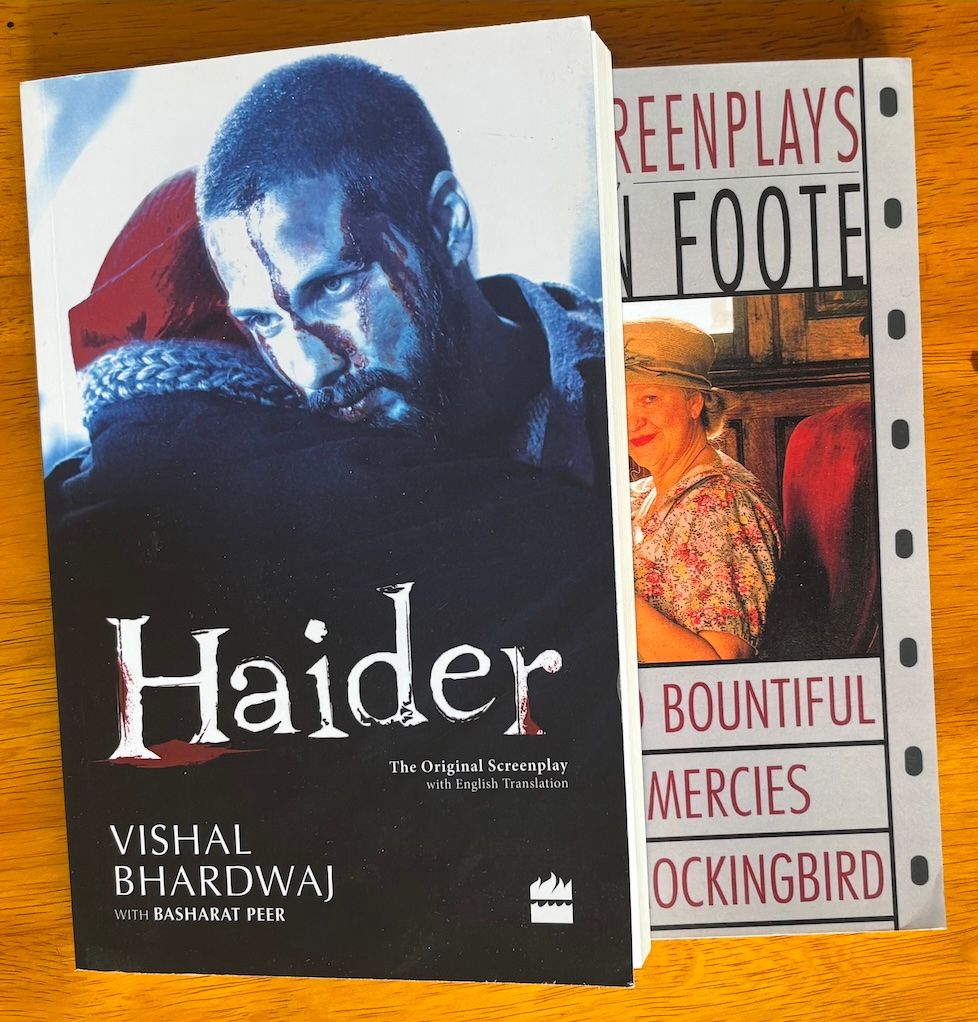Reading screenplays

A new hobby I've picked up recently is to read scripts. No, not programming scripts, the screenwriting ones.
They're usually not lengthy. Appropriate for a 30-40 min read. Engaging and quite visualising if one has already watched the movie.
I've started with 12 angry men. The script that captivates attention and keeps one edge of the seat till the end. The tables turn so eloquently within no time.
Next up is an episode from Big Bang Theory. I've tried to read it while watching the episode. The amount of details one can add in screenwriting, and yet leaving enough for entire creative crew to come together to create an impactful episode consistent with character flow so far.
And I've started off with some scripts in other languages I know. In Telugu scripts, comedy scenes are often attention grabbing. They've to be written carefully and might go through improvisations on screen. In Hindi movies, the improvisations are towards the details.
What strikes me most about Schindler's List is how Steven Zaillian's screenplay manages to convey such profound emotional weight through seemingly simple dialogue exchanges. The script doesn't rely on grandiose speeches or theatrical moments. Instead, it finds its power in the spaces between words, in the careful pacing of revelations, and in the way it trusts the reader to fill in the devastating implications. Reading it after watching Spielberg's film reveals how much of the visual storytelling was already embedded in those typed pages, waiting to be discovered by the director's eye.
The Prestige offers an entirely different reading experience. Christopher Nolan's adaptation of Christopher Priest's novel creates a labyrinthine structure on the page that mirrors the film's temporal complexity. What's fascinating is how the script manages to maintain clarity despite its intricate plotting. Each scene serves multiple purposes, dropping breadcrumbs for later revelations while advancing the present narrative. The competitive dialogue between Bale and Jackman's characters crackles with subtext that becomes even more apparent when you can pause and reread particular exchanges, catching the double meanings that might slip by during a first viewing.
Fight Club presents perhaps the most challenging reading experience of these classics. Chuck Palahniuk's source material was already dense with unreliable narration and social commentary, but Jim Uhls' screenplay adaptation had to solve the unique problem of translating internal monologue into visual storytelling. Reading the script reveals how cleverly the writers embedded Tyler Durden's philosophy into seemingly casual conversations and how they used environmental details to reinforce the protagonist's fractured mental state. The famous twist feels inevitable on the page in ways that the film's visual misdirections cleverly obscure.
These scripts share a common trait with the Telugu and Hindi screenplays I've been exploring—they understand that dialogue serves multiple functions simultaneously. In regional cinema, this multi-layered approach becomes even more pronounced. Telugu comedy scenes, for instance, often work on at least three levels: the immediate joke for general audiences, cultural references for local viewers, and character development that serves the broader narrative. The improvisation space becomes crucial here because actors bring their own cultural intuition to the material, sometimes discovering comedic beats that weren't fully apparent on the written page.
Hindi cinema scripts reveal a different kind of complexity in their approach to detail. The improvisations often stem from the script's framework rather than replacing it entirely. A well-written Hindi screenplay provides enough specificity to guide performances while leaving room for the naturalistic touches that make dialogue feel lived-in rather than written. This balance becomes particularly evident in family drama scenes where the formal structure of relationships—the way characters address each other, the cultural protocols they follow—must feel authentic while still serving the story's dramatic needs.
What's become clear through this reading journey is how differently various film industries approach the relationship between script and screen. Hollywood scripts, particularly those for complex narratives like The Prestige or psychologically driven stories like Fight Club, tend to be more prescriptive about visual elements and pacing. They're written with the assumption that multiple departments will interpret and execute the vision, so clarity and precision become paramount.
Regional scripts often feel more collaborative from the outset. They're written with the understanding that cultural context will fill in gaps that might need explicit explanation in scripts intended for broader, more diverse audiences. This creates a different kind of reading experience—one that requires more active participation from the reader but also offers richer rewards for those familiar with the cultural landscape.
The television scripts like the Big Bang Theory episode operate under yet another set of constraints and opportunities. Episodic television must balance standalone entertainment with long-term character development, creating scripts that serve immediate comedic or dramatic needs while advancing multi-season character arcs. Reading these scripts while watching reveals how much careful calibration goes into maintaining character consistency across hundreds of episodes while still allowing for growth and surprise.
Perhaps most intriguingly, script reading has changed how I watch films and shows. Knowing how much thought goes into seemingly throwaway lines or how carefully certain scenes are structured to hide or reveal information makes viewing a more active experience. You start noticing the craftsmanship behind naturalistic dialogue, the way exposition gets woven into emotional moments, and how visual storytelling elements are encoded in seemingly simple action lines.
The hobby has also revealed how much screenwriting is about problem-solving. Each script represents dozens of creative challenges overcome—how to convey backstory without exposition dumps, how to maintain narrative momentum during necessary quiet moments, how to make coincidences feel inevitable rather than convenient. Reading across different industries and genres shows how varied the solutions to these universal storytelling problems can be, making each script a masterclass in creative constraint management.



